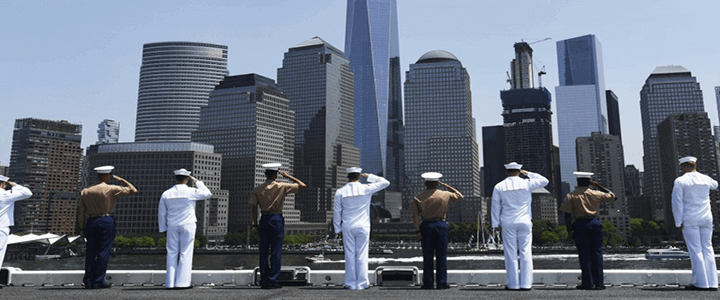Since the attack on September 11, 2001, New York City has been, relatively speaking, lucky. But yesterday afternoon, in what Mayor Bill de Blasio called “a cowardly act of terror aimed at innocent civilians going about their lives,” 29-year-old Uzbek immigrant Sayfullo Saipov of Tampa, Fla. drove a rented Home Depot truck into the bike path along Manhattan’s West Side highway, killing eight and injuring 11.
A case of domestic Terrorism
One wonders if Saipov meant to commit “suicide by cop” after running over the pedestrians and cyclists, planned the attack poorly, wasn’t very bright, or some combination of all the above. Whatever they reason, his error prevented a greater massacre.
There are, by some estimates, more than 357 million privately owned firearms in the United States. As the left points out after every mass shooting incident, legally obtaining a firearm in America is fairly easy if you aren’t a convicted felon, subject to a domestic violence restraining order, or mentally incompetent. Florida, Saipov’s home state, is one of the easier states in which to buy weapons. It was a favorite spot in the 1980s and 1990s for the Provisional IRA and international drug cartels.
When he exited his vehicle, Saipov brandished a paint gun and an airsoft gun. Neither is capable of inflicting any damage beyond a welt. He was subsequently shot in the abdomen by a New York City police officer and is in custody in the hospital.
Have we forgotten officers Ramos and Liu?
The press is calling it the first successful terror attack in New York City since 9/11. There have been other attempts, thwarted by local and Federal law enforcement, but until now, none had been successful. The closest call was in 2010, when alert sidewalk vendors near Times Square alerted authorities to what was supposed to be a car bomb fueled by a combination of gasoline, propane, and fertilizer.
One needs to ask if these reporters, in their haste to pat NYPD on the back, have forgotten about a 2014 incident that left two officers dead. On the evening of Saturday, Dec. 20, Officer Rafael Ramos and Detective Wenjian Liu were sitting in a patrol car in Brooklyn’s Bedford d-Stuyvesant neighborhood, participating, ironically enough, in an anti-terror drill, when 28-year-old Baltimore resident Ismaaiyl Brinsley walked up to the car and shot both officers in the head and chest at point-blank range.
Brinsey, who killed his girlfriend before leaving Baltimore, had posted on social media that he was angry at the deaths of Eric Garner in Staten Island and Michael Brown in Ferguson, Mo., and intended to kill police officers in revenge. He committed suicide following a chase, so the city never had the opportunity to file charges, but his actions are clearly domestic terrorism.
It’s sometimes difficult to distinguish between ordinary crime and terrorism. Why are Saipov’s and Brinsley’s actions terror, but (at least according to Federal law) Las Vegas shooter Stephen Paddock not? The answer lies in what motivated the crime.
Terrorism is legally defined in section 113B of title 18 of the U.S. Code. Domestic terrorism is a dangerous criminal act that occurs within the U.S. and which is intended “to intimidate or coerce a civilian population, to influence the policy of a government by intimidation or coercion, or to affect the conduct of a government by mass destruction, assassination, or kidnapping.”
The difference between international and domestic terrorism isn’t in what ideology or cause motivated the act, but where it occurred.
Saipov left clear indications that he was motivated by an allegiance to ISIS, but since his attack was in New York City, it is domestic, not international terrorism. The same holds true for Brinsley. He intended to influence the actions of the New York Police Department by assassinating police officers. For the record, James Alex Fields, the white supremacist who drove his car into a crowd of protesters in Charlottesville, Va., killing one and injuring scores more, is also a domestic terrorist by definition.
Ismaaiyl Brinsley was just as much a terrorist as Sayfullo Saipov. Let’s not forget that.




